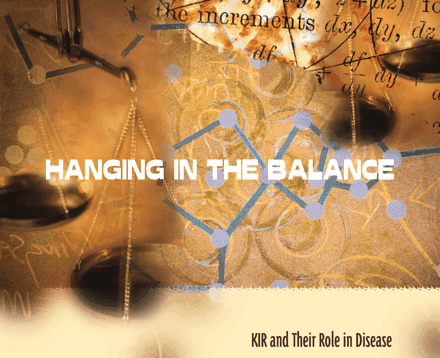HANGING IN THE BALANCE
KIR and Their Role in Disease
Abstract
The killer cell immunoglobulin-like receptors (KIR) are a recently discovered family of activating and inhibitory receptors that control natural killer (NK) cell function. KIR exist as a diverse family of receptors that have evolved rapidly by both gene duplication and recombination events. These findings were unexpected for a family of genes involved primarily in the innate immune response. These findings together with the observation that several of these genes have human leukocyte antigen (HLA) class I ligands, have led to a flurry of investigation into how KIR participate in viral infections, autoimmune diseases and malignancies. This review summarizes the major features of these genes and discusses how they may be involved in both disease pathogenesis and its amelioration.

- © American Society for Pharmacology and Experimental Theraputics 2005



